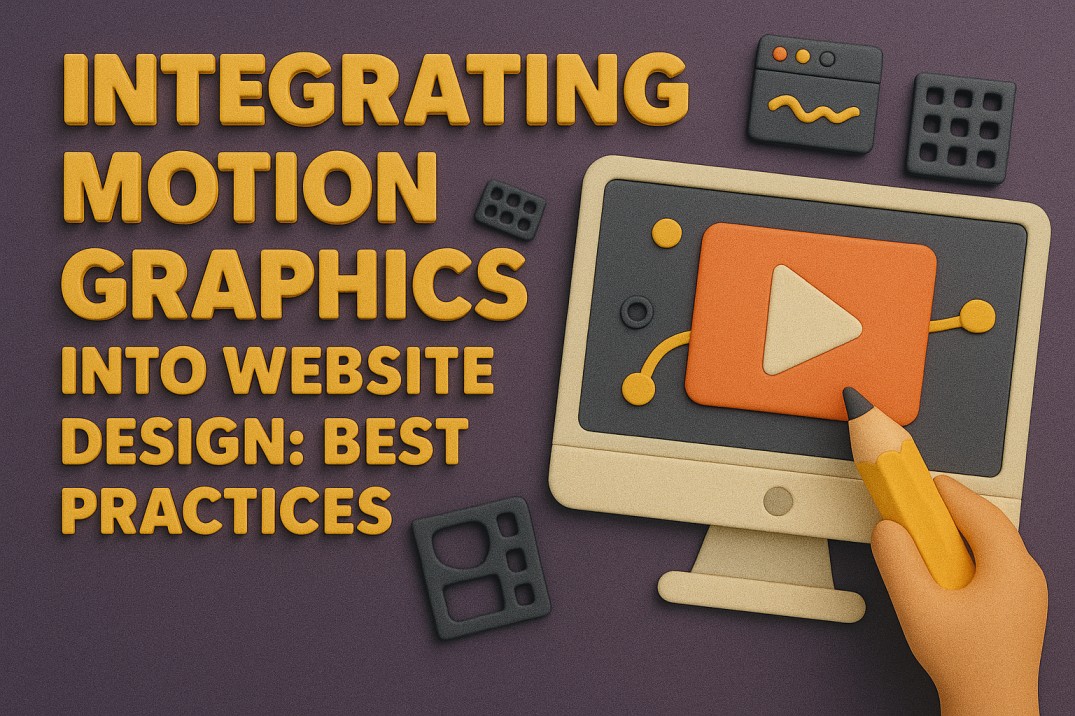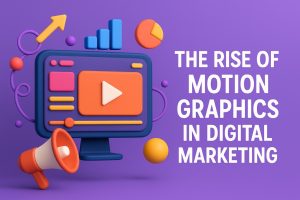Let’s face it—a static website in 2025 just doesn’t cut it anymore. For instance, visitors expect more than pretty images and good copy; in fact, they want EXPERIENCE! So, that’s where motion graphics in web design step in. Because if used correctly, they make websites feel alive, guide users effortlessly, and leave lasting impressions that static design simply can’t match. However, just like seasoning in a good recipe, the key is knowing how much to use and where.
What Are Motion Graphics in Web Design?
In the context of websites, motion graphics refer to the animated graphic elements that bring visual interest and functionality to a page. Unlike full-length videos or elaborate animations, these are often short, purposeful movements that enhance the design without stealing the show.
For example, think subtle hover animations, animated icons, moving backgrounds, or a slick transition when switching between sections of a page. In essence, they can be purely decorative or help communicate an idea, direct user behavior, or highlight content.
Why Integrate Motion Graphics in Web Design?
Still wondering whether motion graphics in web design are just a fancy extra? Well, think again. Here’s why they matter:
- Boost Engagement: Motion grabs attention. For instance, it draws the eye and encourages interaction.
- Improve Storytelling: Movement can reinforce a brand narrative and make content more digestible.
- Guide the User: Animations can direct a visitor’s journey, showing what to click or where to scroll.
- Enhance Brand Identity: Subtle animations can reflect your brand’s tone—whether playful, professional, or cutting-edge.
Best Practices for Motion Graphics in Web Design
1. Microinteractions
These are small animations triggered by user actions like hovering, clicking, or scrolling. As a result, when done right, they make interfaces feel intuitive and polished.
Examples:
- A button changes shape or color on hover
- Animated feedback when a form is successfully submitted
- Icons that animate when tapped on mobile
2. Page Transitions
Animated transitions between pages or sections can create a sense of flow and reduce perceived load time.
Tip: Keep them short and smooth. Because users shouldn’t be waiting on a fancy fade when they’re looking for quick info.
3. Loading Animations
Let’s be honest—no one likes waiting. However, a clever loading animation can make the wait feel shorter and reinforce your brand while doing so.
Best Practice: Use animations that are on-brand and brief, such as a looping logo or engaging progress indicator.
4. Subtle Background Motion
A gentle animated background can add depth without stealing focus. For example, parallax effects or slow-moving patterns are popular choices.
Caution: Too much movement can be distracting or make users dizzy—subtlety is key here.
5. Scroll-Triggered Animations
These animations activate as users scroll through content, thus creating a dynamic storytelling experience.
Example:
- Text or images fade in
- Charts animate to show data progression
- Elements slide into view, thus guiding the reading flow
Performance & UX Tips for Motion Graphics in Web Design
While animations look cool, they shouldn’t come at the cost of performance or usability. So, here’s how to stay smart:
- Use Lightweight Formats: Tools like Lottie (JSON-based animations) help keep motion smooth without heavy file sizes.
- Avoid Excessive Animation: Too much motion can overwhelm users and clutter the message.
- Optimize for Mobile: Make sure animations scale and respond well across devices.
- Accessibility First: Always offer alternatives for users who prefer reduced motion. For instance, use prefers-reduced-motion in CSS for a more inclusive design.
Function Over Flash: Finding the Right Balance
It’s easy to get carried away. However, motion graphics in web design should support the user experience, not just decorate the interface. In fact, every animation should have a purpose—whether it’s to guide, inform, or delight.
Ask yourself:
- Is this animation adding clarity or causing confusion?
- Does it help tell the story?
- Does it align with my brand voice?
Common Mistakes to Avoid
As web design evolves, motion graphics in web design are getting smarter. For example:
- Overdoing It: Too many animations can slow down your site and annoy visitors.
- Ignoring Mobile Users: What looks great on desktop might lag or misalign on phones.
- Lack of Testing: Always A/B test your animations. Because not everything that looks good in design tools works in real-world use.
- Not Considering Load Time: Large files or excessive animations can ruin your page speed, hurting SEO and UX.
Motion That Moves People
Motion graphics aren’t just a passing trend— in fact, they’re reshaping the way we interact with digital spaces. When a brand thoughtfully integrate motion graphics in web design, they can elevate a brand’s online presence, improve engagement, and turn a basic website into an immersive experience.
Now, if you’re ready to level up your web design with strategic, on-brand motion graphics, Fuel IT Online is here to help. Our creative team combines design expertise with a deep understanding of user behavior to craft sites that don’t just look good—they move people.
Let’s build a website that doesn’t just sit pretty—but actually works for your brand.




